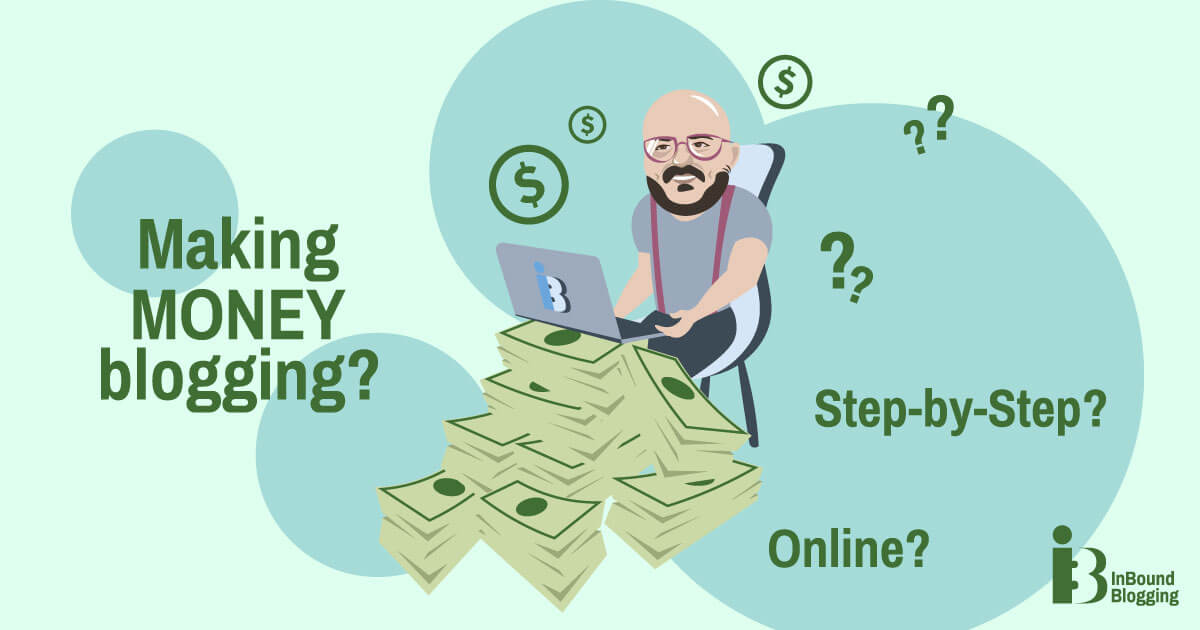Playback speed:
Feeling overwhelmed trying to monitor and boost your SaaS gross margin for the benefit of your business? We all know how challenging this can be. According to Software Equity Group, good margins are essential for a SaaS company’s financial health.
This article is here as your roadmap, offering extensive strategies on how to effectively track and optimize your company’s gross margin.
Ready for some game-changing financial wisdom?
Let’s delve into it!
Gross Margin in SaaS [Key Takeaways]
- SaaS gross margin is a key financial metric that measures the profitability of a SaaS business. A higher gross margin would be a sign of development and scalability.
- Looking at the gross margin is crucial for understanding financial performance, making informed decisions, and ensuring business success.
- Strategies such as monitoring cloud costs, restructuring payment methods, and expanding market reach can help optimize SaaS gross margin and drive business success.
Understanding SaaS Gross Margin
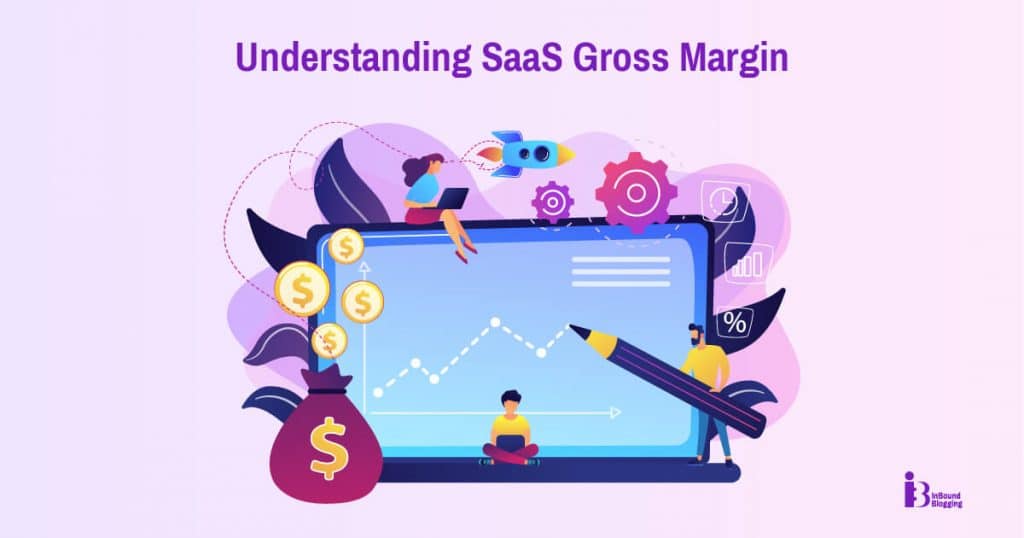
SaaS gross margin is one of the primary financial terms used in business. It’s a big deal in SaaS, and there are some good reasons for that.
Definition of SaaS gross margin
SaaS gross margin shows how much money SaaS companies make from their software products after paying the costs of making them.
Watch this number every month to monitor your profits. Calculating gross margin is an easy process, which we will explain later on.
Importance of gross margin in SaaS
The gross margin shows how easily your company turns revenue into profit. A high gross margin means you keep more money from each sale.
A low gross margin signals that costs are high compared to earnings. Knowing this can help you find ways to cut costs and boost profits. You need to check your gross margins every month, so there are no surprises about how much money you’re making or losing.
How to Calculate SaaS Gross Margin
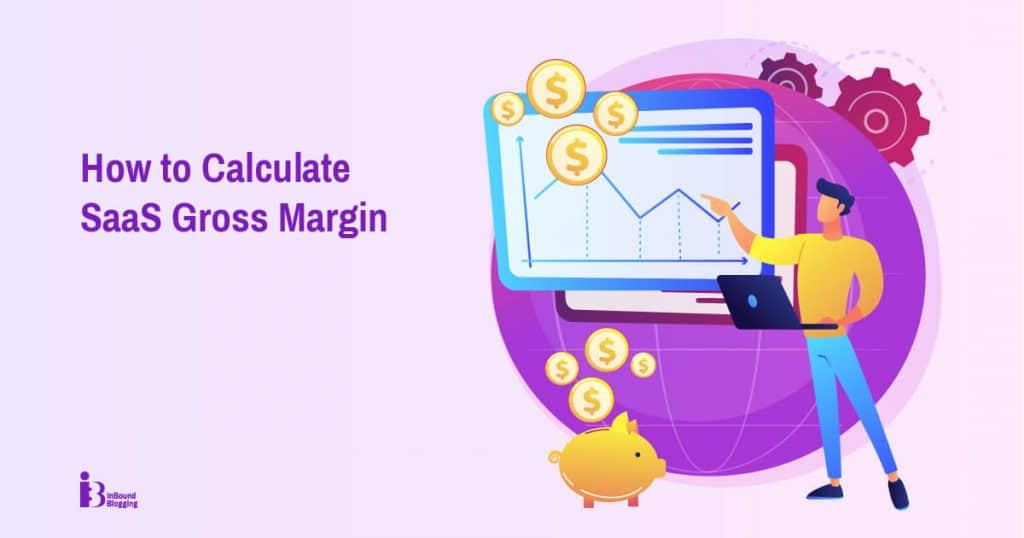
To calculate your SaaS gross margin, you need to use a simple formula that involves calculating the cost of goods sold (COGS) and subscription and services gross margin.
SaaS gross margin formula
The formula to calculate SaaS gross margin is easy to grasp. Here are the steps:
- Start with your total revenue.
- Then, subtract the cost of goods sold, or COGS, divide it by the revenue, and multiply by 100.
- The result gives you your gross margin expressed as a percentage.
But what makes up your COGS? It’s all those costs that support your revenue-making activities directly. This is the heart and soul of knowing how well your business is doing.
Let’s investigate further:
Understanding the cost of goods sold (COGS)
The cost of goods sold (COGS) is key to your SaaS gross profit margin. It adds up all the costs that help bring in revenue. COGS might cover hosting costs or payments for the DevOps team of the software companies. You also count R&D amortization, royalties, hardware costs, and resold product expenses.
To get your hands on true COGS, make sure you tabulate all the spending from these activities. Doing so will put your business on an honest track to profit understanding and success planning.
Calculating subscription and services gross margin
It’s important for SaaS companies to calculate margins by revenue stream as well. This is the best way to evaluate how much profit each of them generates.
Here’s how to calculate subscription margin and services margin:
Subscription gross margin
Subtract the cost of creating and delivering your subscription product from the annual subscription revenue. Divide this amount by the revenue, and then multiply it by 100 to get a percentage.
Subscription gross margin (%) = [(Annual subscription revenue – COGS) / Annual Subscription Revenue] * 100
For example, if your annual subscription revenue is $10,000 and your cost of delivery is $2,000, then your gross margin is:
Subscription gross margin (%) = [($10,000 – $2,000) / $10,000] * 100 = 80%
Furthermore, MRR gross margins are a key metric for subscription-based businesses. They measure the percentage of monthly recurring revenue (MRR) that is left after deducting the cost of goods sold (COGS).
Services gross margin
Subtract the cost of delivering your professional services from the services revenue. These expenses include transactional expenses and costs related to customer success management, to name a few.
Calculating SaaS EBITDA margins
In brief, SaaS businesses typically have high gross margins as they do not incur the costs of producing and distributing physical products. However, their operating expenses can be significant, as they need to invest in research and development, sales and marketing, and customer support.
EBITDA (Earnings Before Interest, Taxes, Depreciation, and Amortization) is a measure of profitability that excludes some non-cash and non-operating expenses.
You can easily calculate SaaS EBITDA margins by dividing EBITDA by revenue and multiplying it by 100.
The formula for calculating SaaS EBITDA margins is:
SaaS EBITDA margin = (EBITDA / revenue) * 100
Let’s assume a SaaS company has a revenue of $10,000 and an EBITDA of $2,000. Then, its SaaS EBITDA margin is:
SaaS EBITDA margin = ($2,000 / $10,000) x 100
SaaS EBITDA margin = 0.2 x 100
SaaS EBITDA margin = 20%
This means that the company retains 20% of its revenue as profit before accounting for interest, taxes, depreciation, and amortization.
The Importance of Tracking SaaS Gross Margin
Tracking your SaaS gross margin impacts your whole business. Let us explain why:
Role in business success
Understanding and tracking SaaS gross margin gives you an overview of the most important success factors for your business. Regularly doing it plays a crucial role in analyzing your financial performance and making informed choices.
By reviewing your gross margin, you can establish benchmarks to measure progress and identify areas where improvements are needed. This helps you optimize your pricing strategy, control costs, and ensure the profitability of your SaaS business.
With a clear understanding of your gross margin, you can make strategic decisions that will drive growth and sustainability in the long run.
Establishing business benchmarks
Here are some reasons why establishing business benchmarks is important:
- Tracking performance: Benchmarks allow you to measure your short-term performance against established goals. This helps you identify areas where you might be falling short or excelling.
- Identifying opportunities for improvement: By comparing your performance to SaaS industry benchmarks, you can develop strategies on how to improve and optimize your operations.
- Monitoring progress: Benchmarks serve as a reference point to track the progress of your SaaS margins over time. They help you gauge if you’re moving in the right direction.
- Making informed decisions: Having benchmarks in place provides valuable insights when making strategic decisions for your business. You can assess the impact of different strategies or changes by comparing them to established benchmarks.
- Gaining investor confidence: Investors often look at benchmarks when evaluating a SaaS company’s potential for growth and profitability. A well-defined benchmarking strategy can help instill confidence in potential investors.
Informing strategic decision-making
Gross margin for SaaS companies is a key financial metric to determine the profitability of their revenue streams.
You should calculate your gross margin on a monthly basis. Monitoring it helps you gain insights into the current condition of your business and change course if necessary.
When it comes to strategic decision-making, understanding and optimizing SaaS profit margins for each revenue stream is important. This means analyzing the cost of goods sold (COGS) for different aspects of your business, such as the above-mentioned subscription revenue and services revenue.
By identifying areas where costs are high or margins are low, you can take proactive steps to improve profitability. Additionally, setting up a SaaS profit and loss (P&L) statement allows you to track all the expenses related to delivering your product or service, including COGS.
With a clear picture of your financials, you can confidently make decisions about resource allocation, pricing strategies, and investments in growth.
What is a Good Gross Margin for SaaS Businesses?
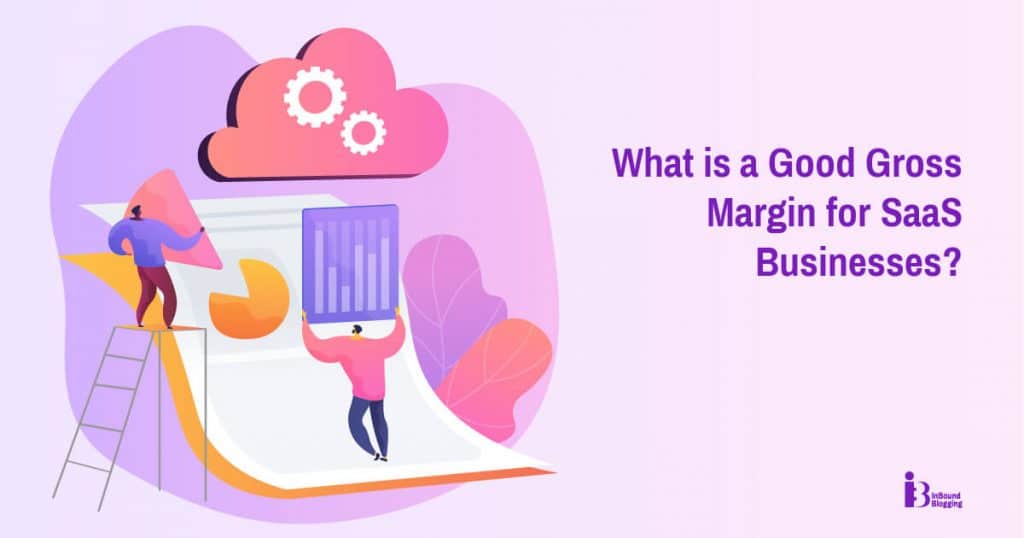
According to various sources, a good benchmark for SaaS gross margins is over 75%. The typical SaaS margins for private companies are in the range of 70% to 85%. Any percentages lower than the average SaaS margins may raise concerns about the sustainability and competitiveness of the business model.
However, SaaS profit gross margins vary depending on several factors, such as:
- Business model variation: Different types of SaaS products or services may have different cost structures and pricing strategies. It’s worth noting that private SaaS companies have more ups and downs in their gross profit margin because it depends on when they get or spend cash. On the other hand, public SaaS companies have a more steady gross profit margin because it reflects the long-term value of their existing software products.
- Company stage and growth rate: Early-stage SaaS companies may have lower gross margins than mature SaaS firms as they invest more in product development, customer acquisition, and retention. However, as they scale up and achieve economies of scale, their gross margins may improve over time.
- Industry and market conditions: SaaS gross margins may also depend on the industry and market a SaaS company operates in. Some industries/markets may have higher or lower costs of service, customer expectations, or competitive pressures than others.
Therefore, when comparing SaaS gross margins against industry benchmarks, it is important to consider the context and nuances of each SaaS business and its environment.
Strategies to Optimize SaaS Gross Margin
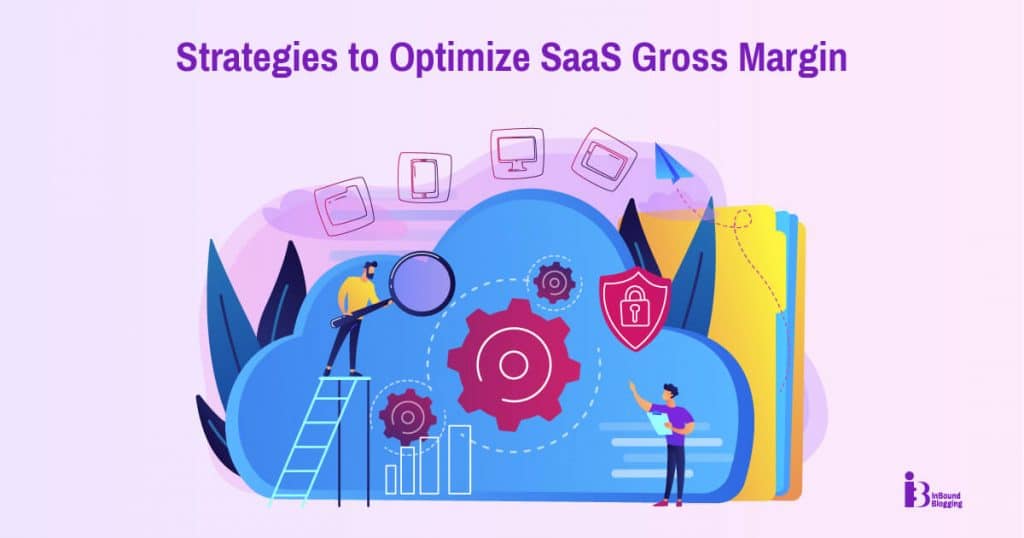
Learn practical strategies for optimizing your SaaS company’s gross margin and driving business success.
Monitoring and measuring cloud costs
As a SaaS owner, make sure to monitor and measure your cloud costs. It’s an important aspect of optimizing your SaaS gross margin and maximizing profitability. Here are 5 strategies to use:
- Regularly review your AWS services: Keep track of your cloud spend by regularly reviewing your AWS services. Identify any unnecessary or underutilized services and consider eliminating or downsizing them.
- Utilize cloud cost intelligence tools: Take advantage of tools like CloudZero to gain insights into your cloud spend. It provides detailed reports and analysis, making it easier to identify cost optimization opportunities.
- Implement cost-per-transaction analysis: By analyzing the cost per transaction, you determine which areas of your SaaS business are more financially efficient and adjust accordingly.
- Optimize trial period expenses: 44% of SaaS companies offer a free trial for their potential users. If you also intend to do it, make sure to carefully analyze the related costs. Consider adjusting the length or terms of the trial period to optimize expenses without compromising on customer acquisition.
- Implement cost itemization: Break down your costs into specific categories, such as infrastructure, development, and maintenance. This helps you understand how to optimize spending and make better decisions about resource allocation.
Restructuring payment methods
To optimize SaaS gross margin, it’s important to consider restructuring payment methods. By revising how customers pay for your services, you can increase profitability. For example, offering tiered pricing options or shifting from upfront payments to a monthly subscription model can help improve your gross margin.
This allows for a more predictable revenue stream and ensures that costs are covered over time. Additionally, by aligning payment terms with the value delivered to customers, you can better manage cash flow.
Restructuring payment methods is an effective strategy to enhance your SaaS business’s profitability and sustainability.
“Don’t be afraid to ramp up your prices. Yes, this can be a controversial move, but there are a bunch of companies that did it this year, including all Railsware brands, without suffering huge churn rates. Typically, a churn rate of ~2% is expected, and if you achieve that, you’re golden.
Also, you can try to boost conversions and run different CTR optimizations. However, creating careful tactics to ramp up your prices usually yields the best results. This goes double if there weren’t any price corrections over the past 24 months.
So, keep an eye out for your competitors and their pricing balanced against the features offered. Then, create a strategy and a campaign to increase the prices and notify users about the move well in advance.” Veljko Ristić, Content Manager, Mailtrap
Expanding market reach
Expanding your market allows you to tap into new customer segments and increase your revenue streams. There are various strategies you can use to expand your market reach effectively.
One strategy is to focus on creative marketing techniques that grab the attention of potential customers. This can include social media campaigns, influencer partnerships, or targeted advertising. By reaching out to a wider audience through different channels, you have a higher chance of attracting new customers.
Another strategy is to explore new markets and target specific industries or regions where there is demand for your SaaS product. Conduct market research to identify untapped opportunities and tailor your marketing efforts accordingly.
Additionally, consider optimizing your website for search engines so that prospects can easily find you online. Improve your SEO by using relevant keywords in your website content and meta tags.
Need a hand mastering SaaS SEO and maximizing your results?
Using creative marketing techniques
Every SaaS owner should learn to think outside the box to promote their business. This is a sure way to stand out from your competitors and attract more customers.
Don’t neglect the importance of quality content—it’s at the heart of a good SaaS content marketing strategy. Publish engaging content such as videos, blog posts, or infographics that showcase the unique features of your software and provide real solutions to people’s issues. Consider collaborating with influencers or industry experts who can endorse your product and increase its visibility.
You can also leverage social media platforms to reach a wider audience and interact with potential customers directly. User-generated content in the form of comments, reviews, etc. holds great value nowadays.
By embracing creativity in your marketing efforts, you can effectively connect with your target market and drive growth for your SaaS business.
“I’d say that Google reviews and ratings from various review platforms have a massive impact on a potential customer’s decision-making process. When a potential customer sees your website on the SERPs, their final “go” signal often lies in the customer reviews.
Positive reviews serve as social proof and build trust, assuring the customer that they’re making the right choice. A prime example is that of HubSpot, another front-runner in the B2B SaaS space. HubSpot has consistently maintained high customer review ratings, which has played a critical role in its ability to attract and convert new users. Therefore, focusing on earning and highlighting positive customer reviews can be a powerful strategy for driving conversions.” John Pennypacker, VP, Sales and Marketing, Deep Cognition
Understanding and optimizing COGS
It’s nearly impossible to optimize your SaaS gross margin without a proper understanding and management of your cost of goods sold (COGS).
COGS includes only the expenses directly tied to delivering your product or service. These refer to hosting costs, R&D (research and development) expenses, royalties, resold product expenses, and more. By accurately tracking these costs and allocating them to the appropriate departments or cost centers, you can gain better visibility into where your money is going.
Once you have a clear understanding of your COGS, you can spot areas for optimization. For example, you might explore ways to reduce hosting costs by optimizing cloud services or negotiating with providers.
You could also look for opportunities to streamline R&D processes or find more cost-effective solutions for software development. The key is to constantly monitor and analyze your COGS so that you can make informed decisions about how to allocate resources and improve profitability in the long run.
Conclusion
Tracking and optimizing SaaS gross margin is important for driving consistent business growth. The SaaS gross margin calculation and analysis are not only simple but can greatly assist you in making informed decisions about pricing, cost allocation, and resource management.
This way, you maximize profitability, establish benchmarks for performance, and adapt your strategy to drive growth. Focus on monitoring costs and implementing optimization strategies to improve gross margin and position your business for long-term success.
FAQs
What is SaaS Gross Margin and how to calculate it?
SaaS gross margin is a financial metric that shows the profit of Software as a Service (SaaS) companies after subtracting the direct costs for delivering their product. To calculate the gross margin, divide your revenue minus the cost of goods sold (COGS) by the revenue, and then multiply by 100. SaaS gross margin is an important indicator of a company’s financial health and profitability.
How does tracking and optimizing SaaS Gross Margin lead to business success?
Tracking and optimizing SaaS gross margin can give better cost visibility, help make smart technical decisions, and boost business sustainability. It also informs go-to-market strategies based on cloud cost per customer.
Tracking and optimizing SaaS gross margin also provides insight into the long-term profitability of the business, enabling companies to better plan for their future. Additionally, it can help identify potential issues or opportunities that may have arisen from changes in market conditions.
What factors should I consider when tracking SaaS gross margin?
When tracking overall gross margin, some factors to consider are:
– The scalability of the hosting infrastructure: As the customer base grows, the hosting costs may increase linearly or sub-linearly, depending on the efficiency and elasticity of the cloud provider.
– The quality and efficiency of customer support: Customer support costs may vary depending on the complexity of the product, the level of service expected by the customers, and the automation and self-service options available.
– The pricing and licensing strategy: Software licenses may have a fixed or variable cost, depending on the vendor and the contract terms. Pricing may also affect revenue and the customer retention rate, which in turn affects the gross margin.
What is a good SaaS gross margin percentage?
The typical SaaS gross margin percentage is between 70 and 80%.
However, this percentage depends on your business model, your revenue streams, and the industry’s SaaS gross margin benchmarks. , A SaaS operating margin of 75% means that for every dollar of net revenue, a SaaS company keeps more than 75 cents as gross profit. SaaS companies with 90% gross margins or more are considered the best in class. A number lower than the average SaaS gross margin is a red flag for investors and analysts.
How often should I review my SaaS gross margins?
You should review your gross margins regularly, at least once a month, to ensure that you are optimizing your pricing, reducing your churn, and increasing your CLV (customer lifetime value). By tracking your gross margins over time, you can identify trends, opportunities, and challenges in your SaaS model and twist your strategies to react adequately.
Why should my company include SaaS metrics in budget planning sessions?
Including key SaaS metrics like recurring revenue, gross margins, or transaction expenses in budget plans aids department leaders in making informed financial choices for areas they control, leading to effective cloud cost management.
It also helps to ensure that all departments are working with the same set of expectations and goals. This way, they can track their progress and adjust their strategies accordingly. Additionally, it helps to ensure that all stakeholders are on the same page when it comes to SaaS budgeting.
Can optimizing SaaS gross margin improve my business’s profitability?
Optimizing SaaS gross margin can improve a business’s profitability by reducing COGS and increasing revenue per customer. Some ways to optimize SaaS gross margin are:
– Improving the product’s quality and performance to reduce customer churn and increase retention.
– Leveraging cloud services and automation to lower infrastructure and labor costs.
– Implementing pricing strategies that align with the value proposition and customer segments.
– Investing in customer success and support enhances customer satisfaction and loyalty.
Can Cloud technology affect my business’s gross margin?
Yes. Factors such as your AWS account bill, migration cost monitoring, or tagging costs influence your total spending and thus could impact your overall profit margin if not properly managed through tools like the CloudZero platform.
CloudZero provides tools to help businesses manage their AWS spending and improve their profit margins. It automates cost monitoring and tagging, allowing businesses to keep track of their spending and act accordingly. Additionally, CloudZero provides alerts when spending exceeds predetermined thresholds.
How can I optimize my company’s subscription revenue margins?
By focusing on unit margins, including selling price and cost per unit, and regularly monitoring payment restructuring processes or exploring market expansion opportunities, you could effectively maximize subscription revenue margins.
Additionally, you should create incentives for customers to stay longer. This could be done by offering discounts or rewards for long-term subscription plans. Finally, you should regularly review your subscription pricing to ensure it is competitive in the market.
Does an increased awareness of engineering costs benefit a software-based business model?
A definite yes. Awareness about where funds are spent within their operations allows businesses to understand cost drivers more clearly, which helps them stay aligned with R&D capitalization policies, boosting the whole cycle of cash flow.
This understanding helps businesses make more informed decisions about their R&D spending, maximize their return on investment, and ultimately increase their profitability. Additionally, it gives them the ability to adjust their R&D strategies as needed to stay competitive.



